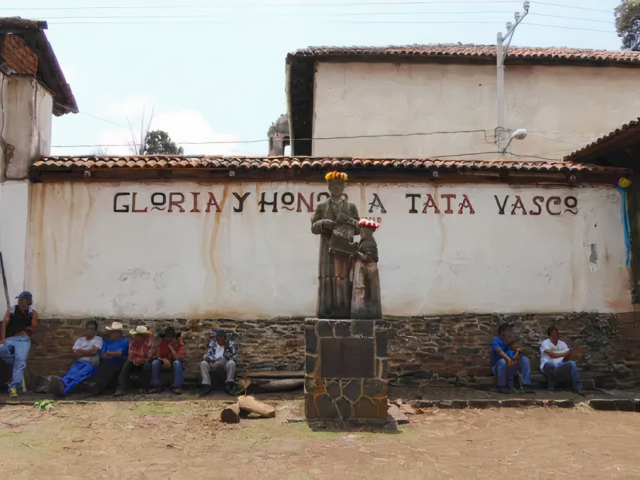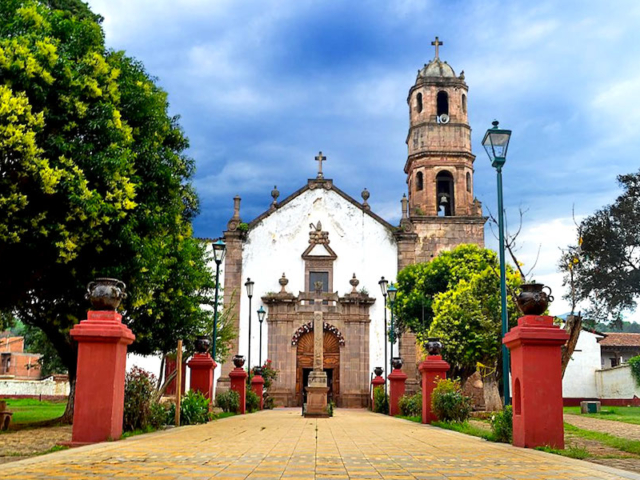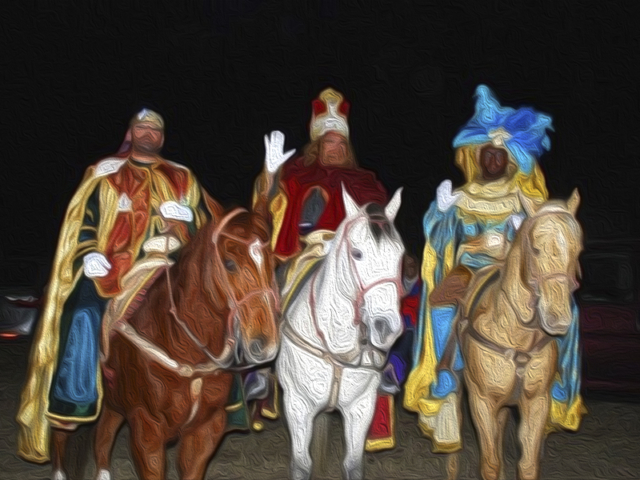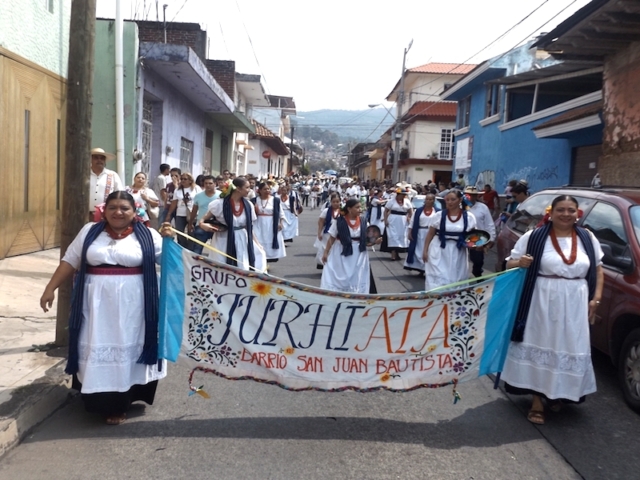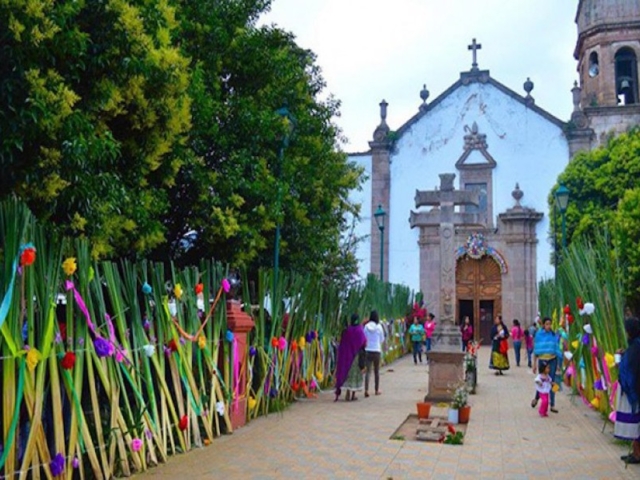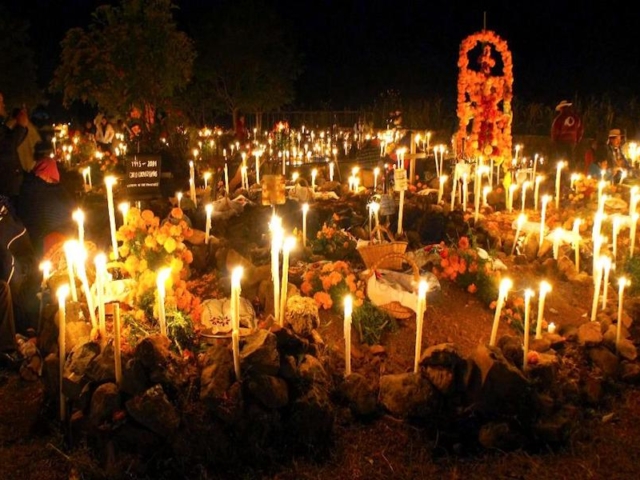Ubicación: Santa Fe de la Laguna
5 minutes from Quiroga, on the highway to Guadalajara. A town famous for its polychrome pottery. Here you can appreciate the typical architecture of a Purhépecha village.
Santa Fe de la Laguna is a quiet and traditional town, located on the northern shore of Lake Pátzcuaro. Its intricate streets, all cobbled, and its traditional houses with tiled roofs and red dusters, invite you to take a peaceful walk enjoying its historical monuments and traditional neighborhoods, always tinged with the indigo blue of the shawls that the local women gracefully wear, going back and forth with a mysterious gait that awakens the curiosity of the visitor.
Of pre-Hispanic origin, this Purépecha town that in pre-Cortesian times was known as Ueameo, was evangelized in the 16th century by Don Vasco de Quiroga, "TataVasco", who in 1533 founded "The town-hospital of Santa Fe de
La Laguna”, bringing together the Purépecha people of the region, training them in various trades such as pottery and carpentry; organizing them socially and economically in such a way that in a short time Santa Fe became an example of organization for indigenous peoples in Michoacán.
The Civic Plaza hosts a popular market on Sundays and a mural on local agrarian history. The chapels in the old neighborhoods (San Pedro, San Sebastián, Santo Tomás and San Juan) are of historical interest.
Santa Fe is known for its artisan tradition of black glazed clay. Its master pottery workshops offer unique and high-quality pieces.
The population has stories and legends about its foundation and historical events.
It gained international fame by being the main source of inspiration for Disney's film “Coco.”
The original hospital, which dated back to 1534, was destroyed and in its place the current building was built in 1896, located behind the Parish of San Nicolás. During its reconstruction, both the chapel and the hospital were designed as closely as possible to match the characteristics of the buildings…
Ver másThe parish church of Santa Fe de la Laguna dates back to the 16th century, although the building we see today has eighteenth-century characteristics, with many elements from the 19th century, when the tower and the altars inside were built. It was founded by the first bishop of Michoacán, D. Vasco…
Ver más1st – Ihuatzio: New Year celebration. The “dance of the old men” is presented. 2nd to 6th – Tócuaro: The Three Wise Men. Four days of celebration with presentation of nativity plays. 6th – Pátzcuaro: The Three Wise Men. There is a presentation of nativity plays. – Janitzio: The Three Wise Men. – Ihuatzio: The Three Wise Men…
Ver másIn Uruapan, in the San Juan neighborhood, there are dances of old men and black people. In Santa Fe de la Laguna there is a fair, dance of the Moros and competitions of popular music, classical music and sones.
Ver másSeptember 14 is one of the most important dates for the community of Santa Fe de la Laguna, as a celebration is held in honor of the Lord of the Exaltation, a crucified Christ carved in the 16th century. In his honor, pilgrimages and dances are held, while the band provides entertainment with…
Ver másOur tradition of commemorating the dead is one of the most beloved and widespread in our country. It has an eminently religious character that not only has Christian foundations taken from the custom of “honouring the faithful departed”, but also retains many of the characteristics of the funeral ritual practiced…
Ver más
